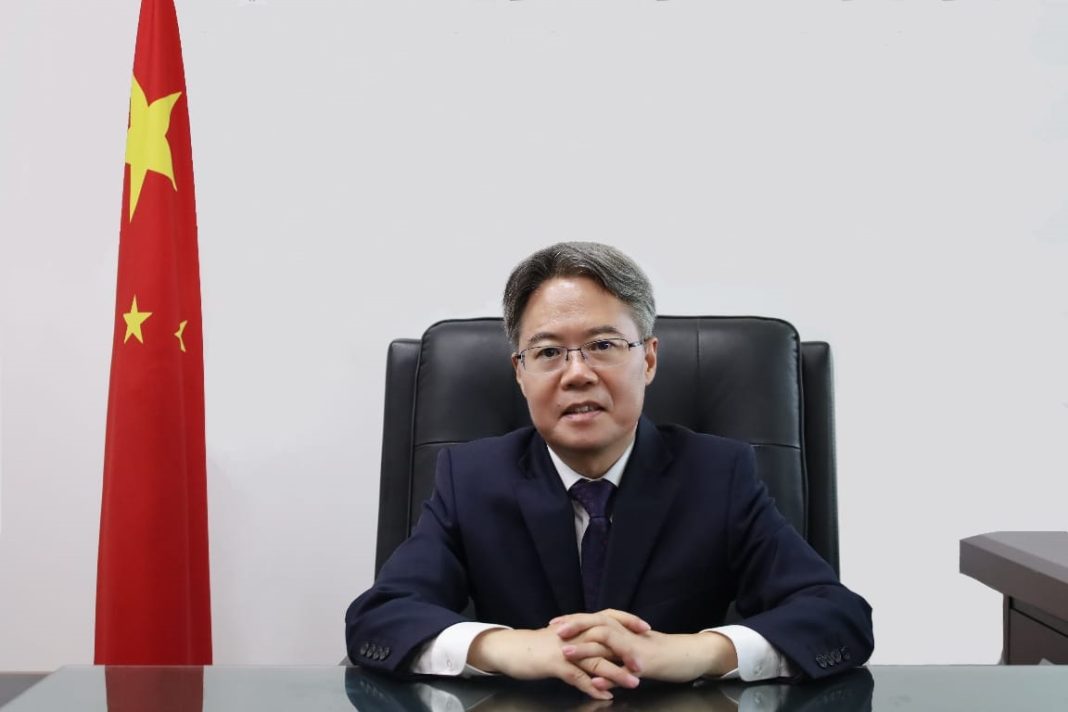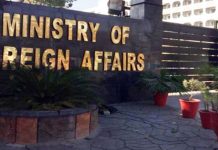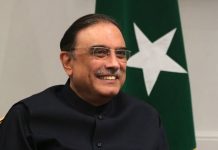By H.E Jiang Zaidong
(Chinese Ambassador to Pakistan)
This year marks the 75th anniversary of the founding of the People’s Republic of China and is a critical year for achieving the goals and tasks of China’s 14th Five-Year Plan. Facing a new wave of technological revolution and industrial transformation, we adhere to the path of Chinese-style modernization, compre-hensively promote high-quality development, accelerate the de-velopment of new quality productive forces, transform and up-grade traditional industries, cultivate and strengthen emerging industries, and lay out the construction of future-oriented indus-tries, so as to achieve a series of new developments. In 2023, ex-ports of China’s “new trio”, namely electric vehicles, lithium bat-teries, and photovoltaic products, experienced a significant surge, surpassing 146 billion US dollars. The three major emerg-ing industries, including biomedicine, artificial intelligence and nanotechnology applications, are booming, and the annual out-put of 2023 exceeded US$55 billion. The integrated develop-ment of the digital economy and the tangible economy is ex-pected to reach US$15.7 trillion in 2027. Last year’s new devel-opments laid a solid foundation for this year’s “good start”. In the first quarter, China’s GDP grew by 5.3% year-on-year, main-taining progress while ensuring stability.
“Stability” has been further consolidated, with industry and service industries grow-ing by 6% and 5% respectively year-on-year. While the trend of “progress” has become more obvious, with new energy vehicle production and sales increasing by 28.2% and 31.8% respective-ly. What is particularly gratifying is that the import and export of goods trade increased by 5.7% year-on-year in the first four months of this year, and the growth rate of imports was nearly 2 percentage points higher than that of exports. The upward trend of China’s economy has not changed, and China remains an im-portant engine of global development. We are ready to use Chi-na’s new development to provide new opportunities for the world, and first of all, benefit our iron-clad friend Pakistan.
This year marks the first year of Pakistan’s new government and an important year for the brotherly Pakistani people to open a new prospect in national development.
The Pakistani govern-ment’s “5Es” framework not only meets Pakistan’s current devel-opment needs, but also chimes with China’s approach of promot-ing high-quality development through new quality productive forces, which indicates that our pragmatic bilateral cooperation under the main framework of the China-Pakistan Economic Cor-ridor (CPEC) will yield more fruitful results. The achievements of CPEC Phase One have provided crucial support for Pakistan’s economic and social development, including early gains made in cooperation in fields of renewable energy, information technolo-gy and biotechnology. Up to now, China has helped Pakistan build four wind farms, two hydropower plant and one solar pow-er station within CPEC framework, with six more hydropower stations under construction upon bilateral cooperation.
The steady supply of clean energy from the sky and river helps main-tain Pakistan’s energy security.
The establishment of a buffalo embryo laboratory by Chinese company in Pakistan with an an-nual production capacity of 30,000 embryos has empowered ag-ricultural cooperation between our two countries. The rapeseed harvester promoted in Pakistan reduces local harvest losses from 40% to 8%. On May 10, China handed over the data of Paki-stan’s ICUBE-Q Satellite from the Chang’e-6 mission to Pakistan, launching a new practice in aerospace cooperation between the two countries.
Looking forward to CPEC Phase 2, we are ready to work with Pakistan to implement the important consensus reached by leaders of the two countries, inject new impetus into China-Pakistan cooperation with China’s new development, and promote the in-depth integration of 5Cs (5 Corridors: growth corridor, livelihood-enhancing corridor, innovation corridor, green corridor and open corridor) with 5Es, create an upgraded version of the CPEC and build a closer China-Pakistan commu-nity with a shared future in the new era. This year is also an election year for the “largest economy” of the world. Unsurprisingly, It is also a year when politicians in relevant countries creates false narratives to divert domestic problems. After hyping to no avail “China’s economic collapse theory” and “China’s economic peak theory” , they concocted the so-called “China’s overcapacity theory.” The reality is that, first China does not have the problem of “overcapacity”, let alone ex-porting “excess production capacity” to the outside world. In 2023, China’s industrial capacity utilization rate rebounded quar-ter by quarter, reaching 74.3%, 74.5%, 75.6% and 75.9% respec-tively, and the automobile manufacturing capacity utilization rate will move towards the threshold of 80%. China’s new energy products are mainly supplied to the domestic market. For exam-ple, in 2023, the export volume of new energy vehicles only ac-count for 12.7% of production, of which only 13,000 vehicles were exported to the United States, accounting for only 0.82% of export volume. China’s solar battery exports to the United States account for only 0.1% of exports. If this small amount of exports would harm the US, then it is too fragile. Second, the competi-tive advantage of China’s new energy industry is rooted in the country’s ultra-large-scale market, complete industrial system, abundant human resources and huge investment in R&D. It does not rely on so-called “unfair competition” or so-called “subsi-dies.” On the contrary, the United States passed a bill in 2022 to provide tax credits of up to US$7,500 for the purchase of every local new energy vehicle and provide manufacturing subsidies for photovoltaic companies. From March 2020 to the end of 2022, the subsidy plan approved by the European Commission totaled up to 3.8 trillion euros, and the subsidy for the battery project alone is as high as 600 million euros. It is crystal clear who is using subsidies to engage in unfair competition. Third, China’s new energy product exports benefit the world and make important contributions to addressing climate change and pro-moting green transformation. In 2023, China exported 1.203 million new energy vehicles, becoming an important force lead-ing the transformation of the global automobile industry. In 2023, the world’s newly installed renewable energy capacity was 510 million kilowatts, with China contributing more than half. China’s wind power and photovoltaic products are exported to more than 200 countries and regions, and the total emission re-ductions for other countries accounted for approximately 41% of the global carbon emission reductions converted from renewable energy in the same period. In particular, it has helped developing countries obtain clean, reliable and affordable energy. We believe justice lies in the heart of the people.
In recent years, the global climate change situation has be-come increasingly grim, and the demand for new energy prod-ucts has become more urgent. According to estimates by the In-ternational Energy Agency, global demand for new energy vehi-cles in 2030 will be 4.5 times that of 2022, and demand for new photovoltaic installed capacity will be four times that of 2022. From the perspective of global market demand and future devel-opment potential, China’s new energy production capacity is not surplus but insufficient. The real overcapacity is the surplus of fake news, disinformation, and fallacies concocted by certain countries against China out of domestic political needs and zero-sum game mentality. It is actually practicing trade protectionism in the disguise of opposing so-called “overcapacity”. Tripping China up will not make certain countries run faster, but will only undermine the stability and smoothness of the global industrial and supply chains and hinder the green transformation of the global economy, thus posing new challenges to countries around the world, especially developing countries, in promoting eco-nomic recovery. Countries including China and Pakistan, relying on our own unremitting efforts and mutually beneficial coopera-tion to seek development and revitalization, must be highly vigi-lant and work together to respond. China and Pakistan are all-weather strategic cooperative partners and stalwarts of the inter-national community in safeguarding fairness and justice and promoting development and progress. China is ready to work with friends from all walks of life in Pakistan to advocate univer-sally beneficial and inclusive economic globalization, comply with the common aspirations of countries around the world, es-pecially developing countries, work together to make the “cake” of economic globalization bigger and fairly share it, and reso-lutely oppose unilateralism, protectionism, firmly promote trade and investment liberalization and facilitation, and achieve mutual benefit, win-win results, and common prosperity.






